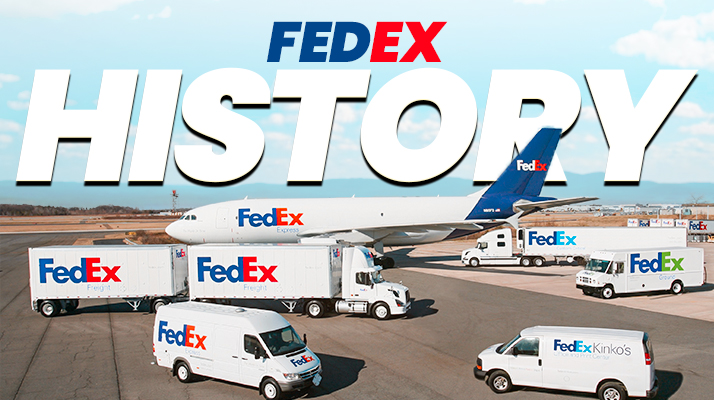Is USPS cheaper than UPS
Factors That Affect Shipping Costs
- Package Weight and Size
- Distance of Delivery
- Delivery Speed
- Additional Services
Comparison of USPS and UPS Shipping Rates
- Domestic Shipping Rates
- International Shipping Rates
When is USPS Cheaper than UPS?
- For Lighter Packages
- For Smaller Packages
- For Packages Going to Rural Areas
When is UPS Cheaper than USPS?
- For Heavier Packages
- For Larger Packages
- For Packages Going to Urban Areas
Other Factors to Consider when Choosing Between USPS and UPS
- Delivery Speed
- Reliability and Tracking
- Customer Service
Shipping costs can be a maze of variables, leaving many wondering which carrier offers the best rates for their needs.
This piece explores the key factors that influence shipping prices, including package weight, delivery distance, and additional services.
It includes a comparison of USPS and UPS, examining domestic and international rates to determine when each service shines.
By the end, you’ll have a clear understanding of which carrier might save you the most money based on your specific shipping requirements.
1. Factors That Affect Shipping Costs
Understanding the factors that affect shipping costs is crucial for individuals and businesses alike as they navigate the complex landscape of shipping solutions. The decision between carriers such as UPS and USPS can significantly impact expenses, especially when considering various elements such as package weight, delivery speed, and additional services. Each of these factors plays a pivotal role in determining the shipping rates, further influencing choices for eCommerce fulfillment and logistics strategies.Package Weight and Size
The weight and size of your package are critical determinants in calculating shipping costs for both UPS and USPS services, affecting not only the overall price but also the speed of delivery options available to you.When considering shipping rates, understanding weight categories is essential. For instance, UPS charges based on dimensional weight, which means that larger packages can incur higher fees, even if they don't weigh much. For example, a:
- 1-pound package that measures 12x12x12 inches might be assessed a shipping rate as if it weighed 5 pounds.
- In contrast, a small envelope under USPS's Priority Mail Flat Rate option allows you to ship items for a set price regardless of the weight, as long as they fit.
This means that for lighter items, choosing flat-rate options may often lead to more economical choices.
Both carriers provide options for small packages, where rates can be more favorable, especially with USPS’s First-Class Package Service, ideal for parcels weighing up to 15.99 ounces. Understanding these various weight categories and dimensions is key for cost-effective shipping.
Distance of Delivery
The distance of delivery is another significant factor that affects shipping costs, with carriers like UPS and USPS offering varying rates depending on whether packages are shipped domestically or internationally.When evaluating shipping expenses, it’s essential to consider how delivery distance influences pricing models.
- For domestic shipments, USPS typically offers more affordable flat-rate options that can be quite advantageous for short distances.
- In contrast, UPS presents tiered pricing for different areas, which may increase costs significantly for longer hauls.
On the international front, both carriers implement surcharges that depend heavily on the destination, with USPS potentially providing more budget-friendly rates for lighter packages.
Examining logistics solutions such as bulk shipping discounts or route optimization can help businesses mitigate expenses and enhance overall efficiency.
Delivery Speed
Delivery speed is a crucial consideration when selecting shipping options, as both UPS and USPS offer various services such as express and priority delivery that come with different price points.Choosing faster delivery options can significantly influence shipping costs, making it essential to consider urgency and budget. For instance, when a package needs to reach its destination quickly, one might lean toward express services that guarantee next-day or two-day delivery. This can be particularly vital in situations like last-minute event planning or urgent medical supply deliveries.
- Express services through UPS typically offer guaranteed delivery times, ideal for time-sensitive shipments.
- On the other hand, USPS provides priority options that might be slightly slower but can be more economical for packages that don’t require immediate arrival.
Understanding the distinctions between these choices is key to selecting the most suitable service based on specific needs.
Additional Services
Additional services such as tracking, insurance, and special handling can further contribute to shipping costs with both UPS and USPS.These services, while enhancing the overall shipping experience, can substantially increase the total expenses associated with sending a package. For example, tracking provides peace of mind by allowing customers and businesses to monitor their shipment's progress, but it can also lead to higher fees.
Customers may opt for insurance on valuable items, protecting against loss or damage, which typically adds a percentage of the item’s value to the total cost. In some cases, businesses might choose special handling for fragile or oversized items to ensure they arrive safely and on time. This strategic investment could save costs in potential returns and customer dissatisfaction.
- Consider a small online retailer shipping a delicate glass vase.
- By paying extra for insurance and special handling, they mitigate the risk of loss and ensure customer satisfaction.
While these options can inflate shipping costs, their value lies in the added security and reliability they bring to the shipping process.
2. Comparison of USPS and UPS Shipping Rates
Comparing the shipping rates of USPS and UPS is essential for businesses and individuals looking to optimize their delivery solutions and minimize costs. Both carriers offer a range of services tailored to different shipping needs, from budget-friendly options for eCommerce to expedited services for urgent packages. Understanding the nuances between their rates can lead to informed decisions that balance cost and service quality.Domestic Shipping Rates
Domestic shipping rates vary between USPS and UPS, with each carrier providing unique pricing structures tailored to different service levels.Understanding these differences can greatly enhance the shipping experience for businesses and individuals alike. For instance, USPS offers a variety of flat-rate shipping options that can be both cost-effective and reliable, making it an appealing choice for those with predictable package sizes. On the other hand, UPS may provide more flexibility in terms of speed and additional services, which can be advantageous for urgent deliveries.
- USPS's Priority Mail Flat Rate starts at $7.70, ensuring packages arrive in 1-3 business days.
- UPS Ground services can start lower for heavier shipments, providing competitive pricing for larger items.
Ultimately, comparing these budget-friendly solutions allows customers to select the best fit according to their needs.
International Shipping Rates
Regarding international shipping rates, USPS and UPS each present distinct pricing models that can significantly impact shipping costs for global deliveries, affecting businesses of all sizes as they navigate the complexities of cross-border logistics and seek cost-effective solutions to meet customer expectations.As companies delve deeper into the world of eCommerce, understanding the nuances between these two carriers becomes essential. For instance, international shipping rates can fluctuate based on package weight, dimensions, and delivery speed, making it crucial for businesses to stay informed. Each carrier offers unique services:
- USPS: Known for its affordability on smaller packages, this carrier appeals to startups and small businesses shipping items like crafts or clothing.
- UPS: Typically favored for larger shipments, offering advanced tracking and more reliable delivery options, which can be a game-changer for larger enterprises.
Logistics challenges such as customs clearance, taxes, and unexpected delays can arise regardless of the carrier chosen. Solutions may include partnering with third-party logistics providers or leveraging software for more efficient supply chain management.
3. Which is Cheaper: USPS or UPS?
Determining whether USPS or UPS is cheaper for shipping involves analyzing various factors including package weight, distance, and the type of service selected. Each carrier has its strengths, and the cost-effectiveness can greatly depend on the specific needs of the shipment. For businesses and individuals wanting to make the best choice for their shipping solutions, understanding these nuances is essential.4. When is USPS Cheaper than UPS?
USPS often proves to be the more economical option compared to UPS in several situations, particularly when shipping lighter and smaller packages. The cost structure of USPS is designed to accommodate specific shipping needs, making it a preferred choice for residential customers and small businesses, especially in the realm of eCommerce fulfillment.For Lighter Packages
Regarding shipping lighter packages, USPS typically offers more competitive rates than UPS, making it an attractive option for businesses and individuals.For instance, a package weighing approximately 1 pound may cost around $5.00 when shipped via USPS, whereas the same package could run up to $10.00 with UPS. These significant differences become even more pronounced with lighter shipments, like those under 5 pounds.
- USPS offers a flat rate of about $7.00 for priority mail up to 2 pounds.
- In contrast, UPS charges nearly $15.00 for similar weight packages.
Therefore, evaluating shipping needs carefully can lead to substantial savings. Businesses often find that opting for USPS not only reduces shipping costs but also enhances overall customer satisfaction through faster, reliable delivery services.
For Smaller Packages
For smaller packages, USPS often excels in providing affordable shipping rates compared to UPS, making it an appealing choice for eCommerce sellers.This efficiency is particularly evident in the various flat-rate options offered by USPS, which allow small businesses to send packages at a consistent cost regardless of weight, as long as they fit within specified box dimensions.
This benefits sellers looking to streamline their expenses, particularly when shipping frequently. Flexible services, such as Priority Mail and First-Class Package Service, cater specifically to smaller shipments, ensuring that items arrive quickly without breaking the bank.
The lack of surcharges for residential delivery makes USPS a reliable partner for small businesses aiming to enhance their logistics while keeping expenses manageable.
For Packages Going to Rural Areas
When shipping to rural areas, USPS frequently offers lower costs compared to UPS, which can translate to significant savings for customers. This distinct advantage is particularly beneficial for small businesses and individual customers who rely on economical shipping options to deliver goods across less accessible regions.Many consumers may not realize that USPS’s network is specifically designed to cater to the unique challenges presented by rural deliveries. With approximately 50% of the U.S. population living in these less populated areas, USPS has established an extensive postal infrastructure and tailored pricing models that effectively address these logistical hurdles.
For instance, statistics show that the
- USPS can deliver packages to rural areas at up to 30% less than its competitors.
- The average delivery time for USPS to these locations is often comparable to urban areas, even though they have a smaller volume of shipments.
Case studies reveal that businesses leveraging USPS for rural shipping often experience a notable decrease in shipping costs and an increase in customer satisfaction.
5. When is UPS Cheaper than USPS?
UPS can be the more cost-effective carrier compared to USPS in specific situations, particularly when shipping heavier and larger packages. Understanding the circumstances that favor UPS over USPS is vital for businesses and individuals seeking to optimize their shipping expenses.For Heavier Packages
For heavier packages, UPS often provides more competitive rates than USPS, making it a preferred choice for businesses that frequently ship larger items.When comparing the costs associated with shipping heavier packages, it becomes evident that the method of shipment can significantly impact the final price. Businesses often find that using UPS not only offers lower base rates but also includes additional pricing benefits such as discounts for regular shippers.
For example, a 50-pound package shipped across the country might cost around $25 with UPS, while the same weight with USPS could escalate to $30 or more, especially when additional services such as tracking or insurance are included.
- UPS: Cost-effective pricing, especially for bulk shipments
- USPS: Higher rates for heavy items and limited service options
This rate difference can be a crucial factor for businesses aiming to optimize their shipping expenses and improve overall logistics efficiency.
For Larger Packages
UPS typically offers better shipping rates for larger packages compared to USPS, which can be particularly advantageous for businesses that have bulky items.This pricing structure allows companies to optimize their shipping budgets, especially when dealing with volume shipments. For instance, when a company routinely ships large furniture pieces or industrial equipment, utilizing UPS can lead to significant savings.
- For example, a shipment of multiple patio sets might cost less per unit with UPS than with USPS due to the former's scalable pricing model.
- UPS provides various services such as freight shipping, which can further enhance logistical efficiency for larger consignments.
By leveraging these benefits, businesses not only reduce shipping costs but also improve their overall operational effectiveness.
For Packages Going to Urban Areas
When shipping to urban areas, UPS may offer more favorable rates compared to USPS, especially for expedited services.This is particularly significant for businesses looking to enhance their logistics strategy in bustling metropolitan settings.
Understanding the nuances of urban delivery can help companies optimize their budgets and customer satisfaction. For instance, while USPS can sometimes boast lower prices for standard shipping, its delivery speed tends to lag behind that of UPS, especially during peak seasons.
Given the competitive nature of urban markets, businesses are often faced with a choice:
- Cost efficiency: Evaluating whether the lower rates of USPS outweigh the faster delivery times of UPS.
- Customer expectations: Understanding the importance of prompt delivery to urban consumers who often prioritize speed.
Ultimately, making informed decisions based on these comparisons can substantially impact a business's success in urban areas.
6. Other Factors to Consider when Choosing Between USPS and UPS
When choosing between USPS and UPS for shipping, several additional factors come into play beyond just costs, including customer service, tracking capabilities, and reliability.Delivery Speed
Delivery speed is a critical factor that can greatly influence your choice between USPS and UPS, depending on service requirements, as particularly urgent packages necessitate a swift and reliable method of transportation that aligns with time-sensitive expectations.When considering shipping options, it's essential to evaluate how these carriers differ in terms of delivery timelines.
- USPS generally offers faster delivery for smaller, lightweight packages, making them ideal for items that need to arrive quickly.
- On the other hand, UPS often excels in handling larger shipments, providing a range of expedited services that cater to urgent needs.
These variations impact overall shipping decisions, especially for businesses and individuals relying on prompt service. Ultimately, understanding each carrier's capabilities can help ensure that customers select the most suitable option for their specific requirements.
Reliability and Tracking
Reliability and tracking capabilities are essential aspects to consider when deciding between USPS and UPS for your shipping needs.Regarding shipping, understanding how both carriers function can profoundly impact a customer's experience. For instance, USPS typically has a user-friendly tracking system that provides status updates, but its delivery timelines may not be as predictable as that of UPS. On the other hand, the latter is often praised for its consistency and overall reliability, which can influence a customer’s choice greatly.
- USPS: Offers a variety of services but has varying degrees of delivery speed.
- UPS: Known for reliable, time-definite delivery options.
Ultimately, the superior tracking and reliability offered by one carrier can lead to greater satisfaction among customers, ensuring their packages arrive safely and on time.
Customer Service
Customer service quality can significantly impact the shipping experience, making it an important factor when choosing between USPS and UPS.Both carriers offer a range of customer service options, ensuring that clients can receive assistance whenever necessary. For instance, USPS provides support through various channels including phone, email, and online chat. Their response times are generally prompt, with many inquiries resolved within a few hours.
In contrast, UPS also excels in this area, offering extensive support via their mobile app, website, and dedicated customer service lines. Users often find that effective communication and quick issue resolution from both carriers can greatly influence their decisions, ultimately enhancing their overall shipping experience.
- USPS:
- Phone Support: Available 8 AM - 8:30 PM
- Online Chat: Quick responses
- UPS:
- Mobile App: Convenient problem-solving
- Website: Comprehensive help section
As customers weigh these considerations, the level of support can often tip the scales in favor of one carrier over the other.
7. Conclusion
Choosing between USPS and UPS for shipping requires careful consideration of various factors including costs, delivery speed, and additional services. Each carrier has its advantages, and understanding their strengths can help customers make informed decisions tailored to their shipping needs.When evaluating shipping options, it is beneficial for individuals and businesses to also take into account regional service variations, package size limitations, and any potential discounts for bulk shipments.
Customers can streamline their shipping processes by:
- Assessing the urgency of their delivery requirements
- Reviewing past performance ratings of each service
- Considering customer support accessibility
Familiarity with the distinct features offered by these carriers not only saves money but also ensures that products arrive safely and promptly. By recognizing the differences between the two giants, one can better align their choice with specific needs, ultimately enhancing the overall shipping experience in the eCommerce landscape.
8. Frequently Asked Questions
Is USPS cheaper than UPS?
The United States Postal Service (USPS) and United Parcel Service (UPS) are both popular options for shipping packages, but which one is cheaper? Here are some frequently asked questions about the cost comparison between USPS and UPS, including rates comparison and shipping options.
What factors affect the cost of shipping with USPS and UPS, including order tracking and tracking methods?
The cost of shipping with USPS and UPS is affected by various factors such as package size, weight, destination, delivery speed, and additional services like insurance and tracking.
Which shipping option is generally cheaper for small packages, and how does customer service play a role in this decision?
For small packages under 5lbs, USPS is generally cheaper than UPS, especially for domestic shipping within the United States. This is because USPS offers flat-rate options for small packages and efficient media mail services.
Is USPS or UPS cheaper for international shipping?
In general, USPS is the cheaper option for international shipping, especially for lightweight packages. However, depending on the destination and delivery speed, UPS may offer competitive rates as well for regions like Asia-Pacific, Latin America, and Canada.
Does the type of package affect the cost of shipping?
Yes, the type of package can affect the cost of shipping with USPS and UPS. For example, shipping a large or oddly shaped package may incur additional fees or surcharges, impacting overall logistics solutions.
Are there any additional fees to consider when comparing the cost of USPS and UPS?
In addition to the base shipping cost, it's important to consider any additional fees or surcharges that may apply when using USPS or UPS, particularly for urgent shipping and automated shipment services.







